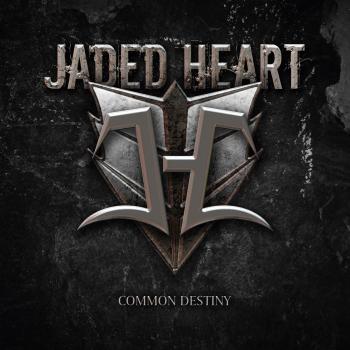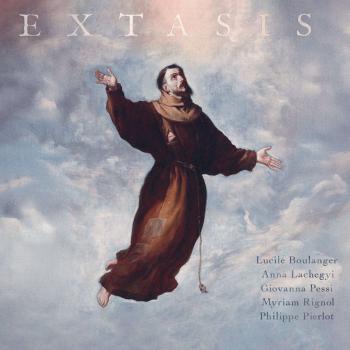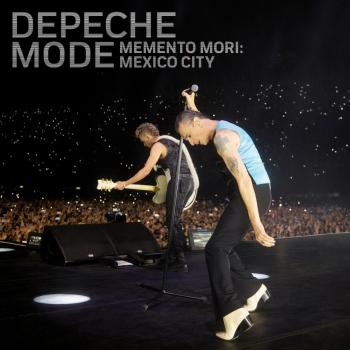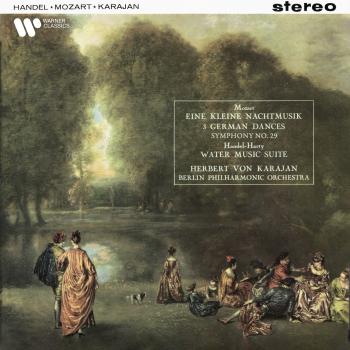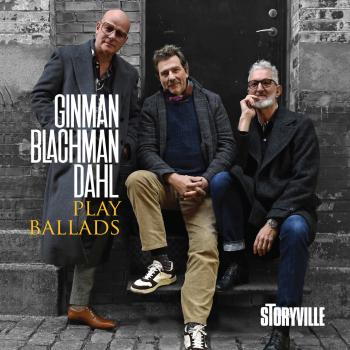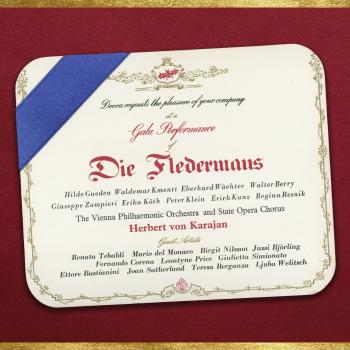Cosmic Cathedral
Biography Cosmic Cathedral
Cosmic Cathedral
Neal Morse is one of the most prolific musicians working in any genre, and he always seems to surround himself with ridiculously talented musicians on every new project. Spock’s Beard may have arrived on the scene unknown, but the musicians in that band are all modern prog legends now. After leaving Spock’s Beard, Morse has found brilliant musicians with which to collaborate, whether those were well known (as with Transatlantic and Flying Colors), or those who were new to us, as with most of The Neal Morse Band and his recent debut with Neal Morse and the Resonance).
Morse has split the difference somewhat on his latest supergroup, Cosmic Cathedral. In addition to the always busy Tennessee-based prog maestro, the band features Phil Keaggy (Glass Harp) on guitars and vocals, Chester Thompson (ex-Genesis touring member, Frank Zappa, Weather Report, Santana) on drums, and session bassist Byron House.
Keaggy, 74, is a legend in contemporary Christian music, a seven-time recipient of the GMA Dove Award for Instrumental Album of the Year, and a two-time Grammy Award nominee for Best Rock Gospel Album. He’s also received plenty of plaudits over his career for his guitar talent. Morse and Keaggy have worked together before, appearing on stage together for live songs that Morse released to his Inner Circle subscribers — including a fantastic live cover of George Harrison’s “What is Life?” — and Keaggy played guitar and sang on Morse’s excellent solo album, One.
In addition to his previous work with Morse, Keaggy had Thompson play on his 2016 album All at Once. Keaggy and House teamed up with drummer Kyle Jones on a 2019 album called Catz N’Jammuz. So, Keaggy had worked with all three of his Cosmic Cathedral bandmates separately before. However, it was a chance meeting between Morse and Thompson at a Steve Hackett concert that planted the seeds for Cosmic Cathedral.
Morse had connected with Thompson, and a jam session ensued that served as the basis for what became Cosmic Cathedral’s debut, Deep Water.
“We're all acquainted with each other, and we all have a lot of respect for each other,” Keaggy said. “I refer to Cosmic Cathedral, which is the name of the band…but I think of those three guys as the cathedral, and I'm a little chapel over to the right. (Morse) contacted me after he had met up with Chester Thompson, and he went to Chester’s to jam and stuff. And then Chester, I think, recommended me or he recommended Byron House to play bass and Neal thought of me. So, we got together a year ago, January 2024, and we just spent a few hours just jamming, and putting things down on tape, and calling out chords and changes, and making up faux lyrics on the spot. And some of those jams developed into songs that went into the Deep Water project.”
For progressive rock fans who may not have gravitated toward Morse-led projects in the past, this might be their way in. The overriding feature of the album is that it has grooves for days. That is not surprising when the music came from these musicians jamming together. The rhythm section of Thompson and House is so fluid that the music can’t help but have an underlying jazzy feel to it. There are hints of the Neal Morse Band, Transatlantic, Neal Morse and the Resonance, and Neal’s solo work in the album, but Cosmic Cathedral has its own sound.
Deep Water will present some surprises to longtime Morse fans, and it’s good to know a guy who has written everything from cheesy 80s pop rock to folk to country to Broadway-style shows to progressive rock can still turn out something fresh and provide unexpected pleasant surprises.
There are some classic sounds from the Morse sonic palette, but there’s something new to the music as well. Thompson is less overtly present as a drummer than usual Morse collaborator Mike Portnoy, but his drumming has no less power or precision.
Keaggy nearly wasn’t able to participate in making the album. He had been suffering from “trigger thumb,” an affliction in which the tendon that flexes the thumb is irritated. The thumb gets swollen and can get stuck in a bent position.
“I had to go see a surgeon, and it was kind of frightening for me,” he said. “It was really humbling that whenever I put pressure on the thumb, it would just stay there, and to bend it again…it would snap. You could hear the snap across the room. And super painful. I got back into playing eventually. They tracked without me — Neal and Byron and Chester. And then, I was surprised to hear them say, ‘We’ll send you the files.’ And I was so honored that they asked me to still be a part of the record. And I took my time through every track and played the best I could, and I actually was surprised at how well I could play the electric. Harder on the acoustic, but I felt quite at home on my trusty old guitar — my Zion and my Strat.”
The album opens with the 13-and-a-half-minute epic “The Heart of Life,” which wastes no time delivering the message that this is going to be an album focused on musicianship. Cosmic Cathedral introduces itself with an extended proggy, fusiony instrumental intro of just over three minutes before allowing listeners to catch their breath. Morse’s lead vocal kicks in during a quiet passage, but he’s quickly joined by Keaggy, and the two musicians have voices that could not be better suited to blend with the other’s, a la Lennon and McCartney. The harmonizing on this track and throughout the album is magical.
“The Heart of Life” is an epic opening number and comes off as a statement of intent. It is one of my early favorites, and it will be interesting to see where it lands in my rankings later. The guitar work alone is breathtaking in the extended middle stages of the song. The call-and-answer vocal layers late in the song are sublime.
“I remember doing the second solo in ‘Heart of Life,’ it goes into this ominous section. I was playing like from a guttural place, from deep, deep, deep within through my instrument, through my amp and my pedals, getting this tone — kind of a (Allan) Holdsworth thing,” Keaggy said. “I really call on Holdsworth a lot, even though I couldn’t play technically like him. I could fool some people who weren’t as well educated about good guitar playing. (Laughs)”
“Time to Fly,” a single from the album released March 27, has a jazz-rock groove like something off a Steely Dan album, but there are elements of the Beatles (harmony vocals), and the blues, while it retains tons of prog rock atmosphere. Morse delivers his verse vocals like he’s in some smokey blues dive. The chorus hook is catchy and includes Chicago-esque horns.
Keaggy sings lead during parts of the chorus, hitting the higher notes. A jazzy sax solo plays into a guitar solo — played by Keaggy on his Fender Stratocaster — in the middle before returning to the soaring chorus. As the band name (and Morse’s history) would suggest, the lyrics skew toward spiritual themes. Lyrically the second track is about making the most of one’s time on Earth. But the groove steals the show.
“You’ve got this incredible sax solo, and we kind of interplay, the two of us (Keaggy and Morse), which was a mixing thing that (producer) Jerry (Guidroz) did,” Keaggy said. “I love the chorus of that. I love the groove. I think this is different from the other Neal Morse albums I’ve heard, and I think a lot has to do with the players. It’s a different cuisine.”
“I Won’t Make It” is a ballad highlighted by gorgeous string accompaniment. The shortest song at just 3:55, the band packs a lot into a small package — emotional guitar bits, a powerful vocal by Morse, and a solid bedrock from the rhythm section of Thompson and House. It begins like something that Morse would have put on one of his singer-songwriter solo albums, but it evolves into something that on albums of the past might have been just one section of an epic song.
Here it works well on its own, giving the listener time to breathe before two much longer offerings to close the album. The guitar solo is an album highlight.
“Walking in Daylight” is a mini epic at just a few seconds under nine minutes. Keaggy takes his turn on lead vocals. It has a bit of a bombastic prog intro, before a jazzy keyboard pattern and guitar soloing weave in and out of House’s bass groove, locking tightly with Thompson’s drumming. Keaggy’s lead vocals create a nice contrast to Morse’s, while the harmonies continue to soar straight through the ear canal into the pleasure center of the brain.
There’s a groovy, extended, drum-and-bass middle section supporting keyboard / mellotron washes and guitar soloing vaguely reminiscent of what a Holdsworth and Adrian Belew mashup might sound like, and I quite enjoyed the jazzy piano bits in the final minutes.
“That’s Chester’s environment,” Keaggy said of the song’s groove. “Neal does some great Rhodes-ish, jazzy piano bits, too. I do this long EBow solo. It was a delightful thing.”
Keaggy said he wrote the lyrics for “Walking in Daylight” based on phonetic sounds Morse left on the demo to identify where the vocal line should sit.
“I took his phonetics, how he sang, and I wrote words that sounded just like that, and sang ‘walking on daylight,’ which was originally the title,” Keaggy said. “But then Neal mentioned, ‘I’ve got to change that to walking in daylight,’ because it reminded him of ‘Walking on Sunshine’ (by Katrina & the Waves). So, we changed that, and he also brought in background singers — these brilliant youngsters who sang the BGVs (background vocals) for us.”
Morse is known for his epics, but not many of them eclipse the nine-part, 38-minute “Deep Water Suite,” which closes the album. Perhaps just Transatlantic’s “The Whirlwind” and Morse’s solo work “Testimony” stand as more ambitious pieces of music in his considerable catalog from start to finish. Overall, the concept of the epic is to make the effort to bypass the easier, more shallow things in life and find the deeper meaning — God, as is usually the case with Morse’s lyrics — using water as the metaphor.
Neal avoids the trope of starting with an overture on “Introduction,” which begins with electronicized vocals unlike anything that appears on any of Morse’s projects or solo albums. The three-minute opening section establishes the lyrical theme of launching out into the deep water, which repeats through the song cycle, and then the track itself launches into a dizzying euphoric instrumental section.
“Launch Out, Part One” is a rocker that sometimes strays into territory shared with Transatlantic’s The Absolute Universe and, at times, Morse’s Sola Scriptura, although it doesn’t rehash either — it’s more that it contains similar flavors and ingredient combinations.
Keaggy’s lead vocals shine brightly in the mid-tempo “Fires of the Sunrise,” which he shares with Morse. There’s some lovely guitar — both acoustic and electric — highlighting the track, including some Holdworth-esque soloing. Keaggy said it was the first part of the album he worked on. That section gives way to “Storm Surface,” a short, proggy instrumental interlude, largely consisting of Steve Hackett-esque guitar soloing over Thompson’s drumming, House’s bass, and keyboard washes. Tension builds near the end with heavier guitar and keyboards.
“Nightmare in Paradise” shifts the music into a minor key and explores the themes of earthly rather than heavenly pursuits — materialism, consumerism, greed, etc. (the “shallow water”) — which is a common theme for Morse, particularly in his epic song cycles as a solo artist, in Transatlantic, and in the Neal Morse Band. There’s a spoken verse that adds drama to the storyline that some listeners may find cheesy, but it works for me. The song grows big and cinematic before the tone lightens near the end and flows into “Launch Out, Part Two,” a short, uplifting song that exalts living a good life.
Launch out into the deeper water
Come on, you know this is the real life
Launch out and take good care of each other
Herein lies the way to Paradise
Keaggy joins Morse, trading lead vocals in “New Revelation,” which is one of the more overtly religious lyrical songs on the album, but it also has one of the tastiest instrumental sections, and it rocks. It opens with shakers and a recurring keyboard bit serving as the bed for some scrumptious bass and guitar licks.
“Launch Out, Part Three” is the shortest section, bringing back the main lyrical theme with towering vocal harmony vocals and a keyboard solo that could have walked in out of a 1970s Styx album before making a gentle exit in under two minutes. That softer section melts seamlessly into the final track of the epic, “The Door to Heaven.” It features some soft guitar reminiscent of Anthony Phillips’ work.
The final piece may turn off those averse to Morse’s most religious lyrics, as he revisits his thankfulness for Christ’s sacrifice opening the literal door for humanity to enter the kingdom of Heaven — a topic that has been a guiding principle for him since late in his time with Spock’s Beard.
Keaggy takes his turn on lead vocals in the final section as well, and combined with choral backing vocals, it provides the patented dramatic Morse ending fans have come to expect from his epics. The joyousness of this piece is infectious, and it’s easy to imagine the more devout fans of Morse and Keaggy being moved to tears at the end of this amazing song cycle. In fact, the stacked harmony vocals of the big ending moves Keaggy himself to tears.
“I can’t listen to the ending of the “Deep Water Suite” without getting choked up,” he said. “I mean, it is a spiritual experience, and it’s emotional, and it’s musical.”
The enhanced electronic vocal bit about launching out returns as the piece grows more tranquil at the end, bringing “Deep Water Suite” to a logical, full-circle conclusion.
Although the lyrical subject matter is spiritual, Keaggy said he thinks Deep Water will still have broad appeal.
“This album, I think, holds a real important message to seekers who are looking for peace, and looking for a relationship with God. But it also, I think, will please prog music lovers and people that love jamming — the people that love good playing,” he said. “When I heard how well the drums were recorded and how great the bass sounded, and of course Neal’s keyboard work, especially, I said, ‘I definitely want to be up for this.’ And I played through some pain, especially in the early part of the fall, when I started getting my facility back. But I was quite dedicated to the project, and I’m glad that I was. And I’m glad that it turned out so beautiful.”
While I concur with Keaggy’s opinion that fans of great musicianship and jamming will find plenty to like on Deep Water, I believe the lyrics will turn off a segment of the progressive rock fandom that prefers more secular — or at least more vague — lyrics. It’s just a fact of life that some people don’t want to be hit over the head with a spiritual message, but those who have followed Neal Morse’s journey should expect that there will be a heavy dose of the Lord in his music, because that’s just where he is.
If that doesn’t bother you, I can’t recommend this release highly enough. It’s recognizable as a Morse product, but it has different flavors than what’s come before. There is a great jazzy groove of an undercurrent (no pun intended…OK, pun partially intended) to Deep Water. (Michael Citro)

